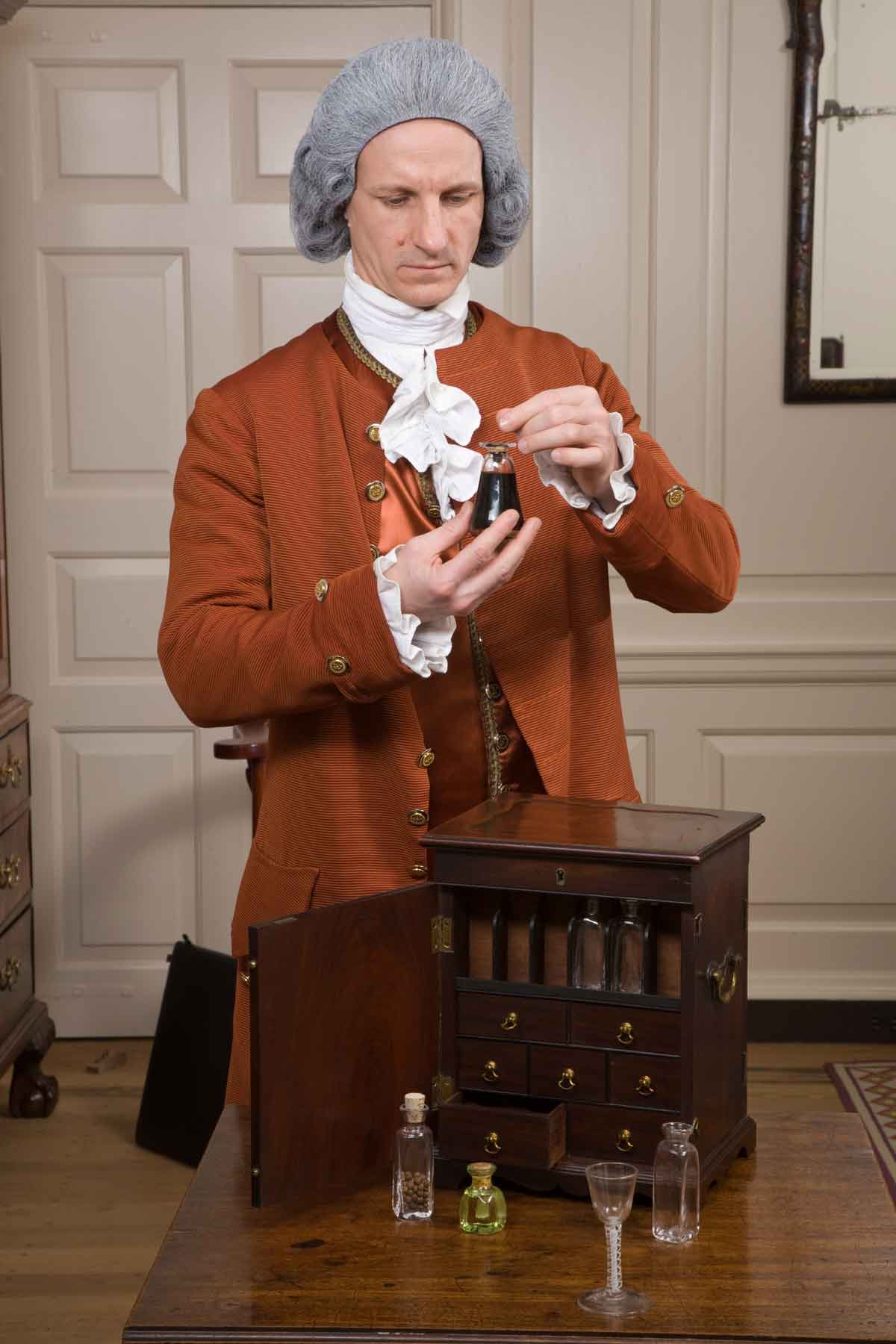As a historian, my favorite period is the 18th century. People sometimes ask if I wished I lived back then. The answer is, um, no. I love my air conditioning (especially in these Tidewater summers), my freezer, and my microwave — not to mention indoor plumbing. But I do love the 18th century and its people (well, not all of them, but that’s another story for another day), too. That’s why I am sometimes torn between compassion for these people as they encountered difficult situations and elation when those calamities produce the documents from which we learn the most.
A great example is one of the first projects I worked on as a young researcher at Colonial Williamsburg under the guidance of former historian Kevin Kelly. We studied a document that came from a period of adversity in Williamsburg’s history. From sometime in the fall of 1747 until well into 1748, Williamsburg experienced a smallpox epidemic. The document that resulted from this was “A True State of the Small Pox Febry 22d 1747/8,” and the author was identified by his handwriting as Dr. John De Sequeyra of Williamsburg. Apparently, the good doctor, as part of his study of disease in Virginia, went house to house and inquired how many in the household were currently sick, how many had recovered, how many had died, and how many had not yet had the disease.
Dr. De Sequeyra created a census! A list of 85 heads of household at a particular point in time, with the number of persons in the household — priceless! We identified 12 additional, unlisted heads of household from the York County court records and cross-checked all 97 names with other local records, creating biographies. Kevin and I learned a lot about mid-century Williamsburg and its people!

First, it’s important to say that Dr. De Sequeyra described only the 53 people who did not survive the disease, including the enslaved, women, apprentices, and other minor children. This tells us that he really tried to capture the whole population. (Unfortunately, we don’t know how the people in the unlisted households fared.) Although this wasn’t a census with detailed household information, like today’s 2020 census, the names and numbers Dr. De Sequeyra recorded helped us answer many questions.
How many people lived here? Figures from the 97 households reveal that Williamsburg’s population was about 885 people in the winter of 1747/8. Since we know from the 1776 Virginia Almanack that Williamsburg’s population was 1880 in 1775, that tells us that Williamsburg’s population more than doubled in just over twenty-five years. This was a booming place!

So, who lived here when the census was taken? For some, we had no evidence of occupation, but most of the heads of household were tradesmen (28). There were several merchants (14) and tavern keepers (10). There were nine professionals (doctors, lawyers, and clergy), and 14 people who had occupations not easily categorized, like the governor, the musician, and the artist/dance instructor William Dering. (Colonial Williamsburg owns several portraits by Dering. Find them at emuseum.history.org.) Many other familiar names include James Craig (silversmith, The Golden Ball), Henry Wetherburn (tavern keeper, Wetherburn’s Tavern), William Parks (printer), Catherine Blaikley (midwife), Anne Geddy (widow, James Geddy House), and William Prentis (merchant, Prentis Store). John Custis, whose property is being investigated by Colonial Williamsburg’s archaeologists, is on the list, too.
Crunching the numbers created a picture of how Williamsburg was developing in 1747/8. Williamsburg had a core population of household heads who had been there for over 20 (about ten percent), as well as nearly 30 percent who had lived there ten years or more. There was a substantial influx of newcomers in the 1730s and 1740s though. Household sizes were pretty small (8.6 persons on average), considering that typical households could include several children, more than two generations, and a workforce (enslaved and/or free). Williamsburg heads of household were mostly men in their prime working years with 66 percent aged between 25 and 39. Only six percent were in their 60s or older. (While the relative lack of elders might seem grim, it wasn’t unusual for older folks to live with their children.) Sixteen of the householders were women. Forty-one people lived at the College. Altogether, these statistics and averages give us an idea of the Williamsburg its people saw as they lived their lives there in the mid-18th century.
We public historians get very excited about being able to see how our sites developed over time. We love gaining a better understanding of the life experiences of its people! Most importantly, knowledge gained contributes to the scholarly conversation in this research discipline called history.
The Library of Congress owns this extremely helpful document. Unfortunately, the original is not online at this date. You can find a transcript, however, during this shelter-at-home period while JSTOR is making its content available to the public. See William Quentin Maxwell, “A True State of the Small Pox in Williamsburg, February 22, 1748,” Virginia Magazine of History and Biography 63, no. 3 (July, 1955): 269-74, at https://www.jstor.org/stable/4246131.
Cathy Hellier is a historian in Colonial Williamsburg’s Historical Research and Digital History department and a long-time member of the Foundation’s Evening Dance Ensemble. Just finishing up the requirements for her doctorate, she plans to enjoy some family time, binge-watch The Great British Baking Show, and re-beautify her gardens.
